On an autumn walk through a local park, I heard several Blue Jays calling raucously. I’ve learned that it can be worth my while to pay attention when Crows and Jays are frantic so I looked towards the oak trees where the noisy birds had gathered. I became even more interested when the Black-capped Chickadees and White-breasted Nuthatches also started calling. Moving closer, I saw a small bird, similar in size the Blue Jays in hot pursuit of it, diving down from a tree top towards the ground.

It was fairly easy for me to find where it had gone because the Jays and small birds followed right after it. They kept flying and diving and landing on and around a tree stump.
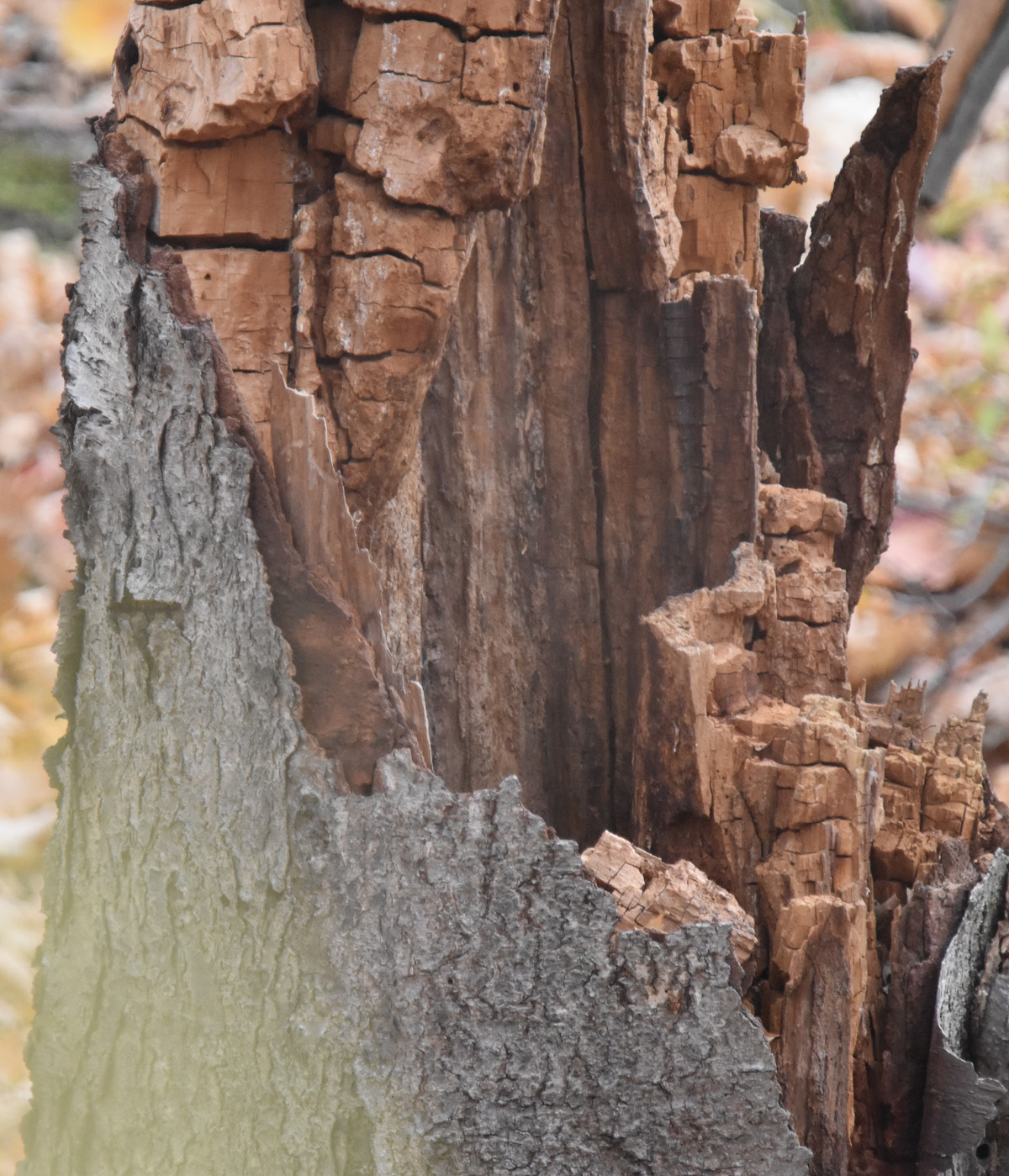
But there was no sign of the object of their wrath.
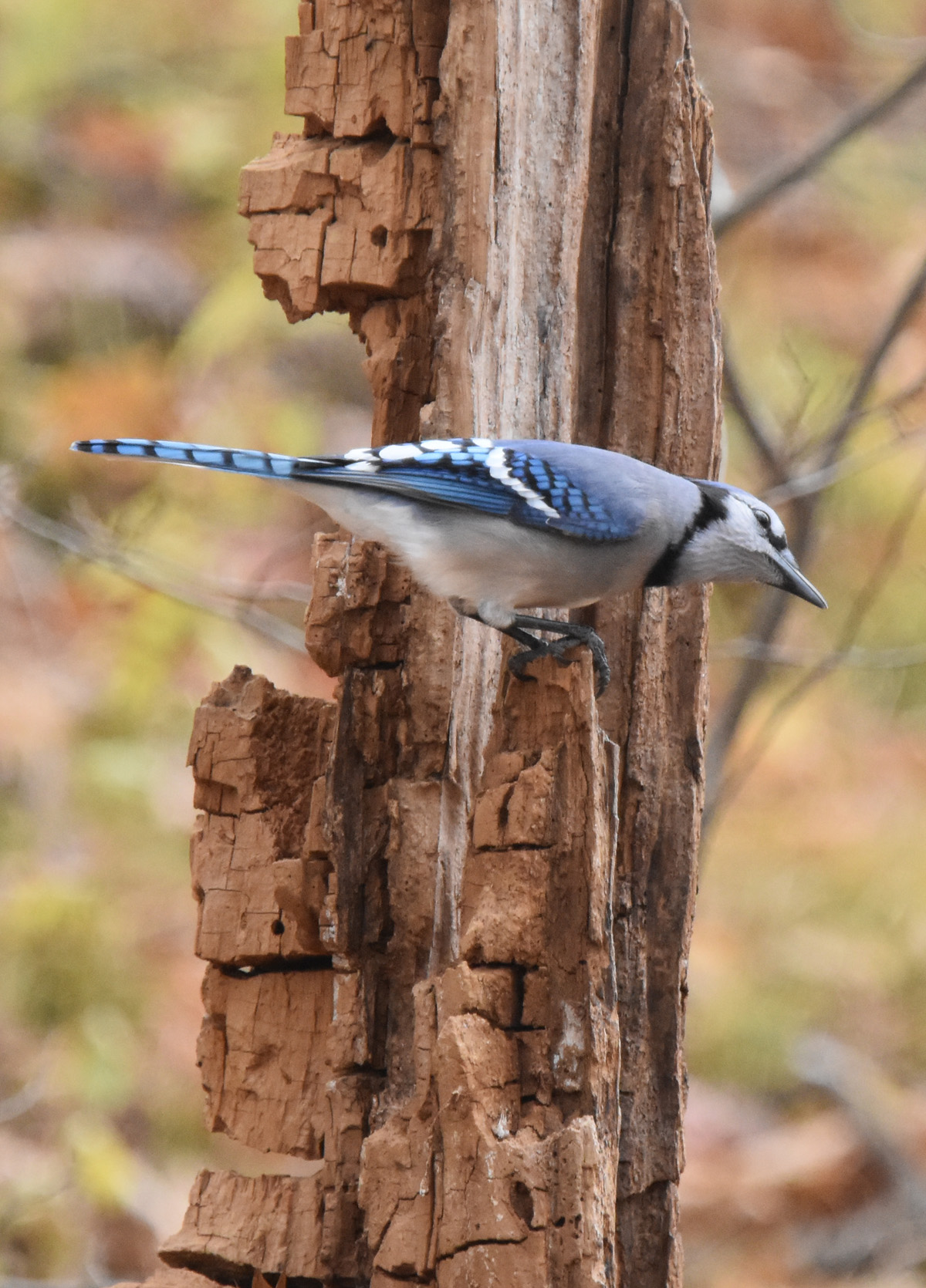
Intrigued, I stopped as close as possible on the trail, still dozens of yards away, and waited. Whatever it was, the bird was hiding in the stump.
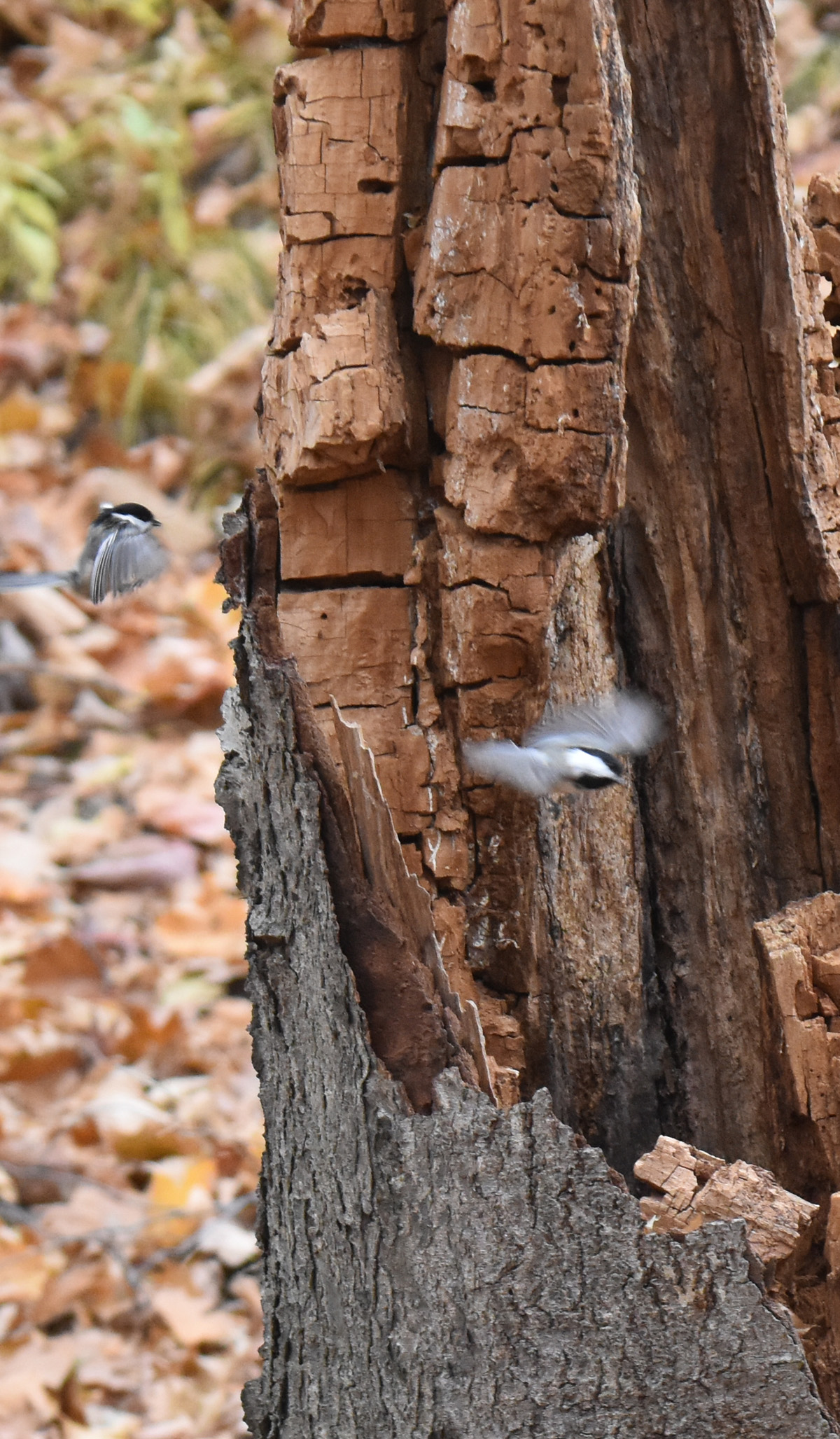
I took photos of the various types of birds that made up the mob chasing it.
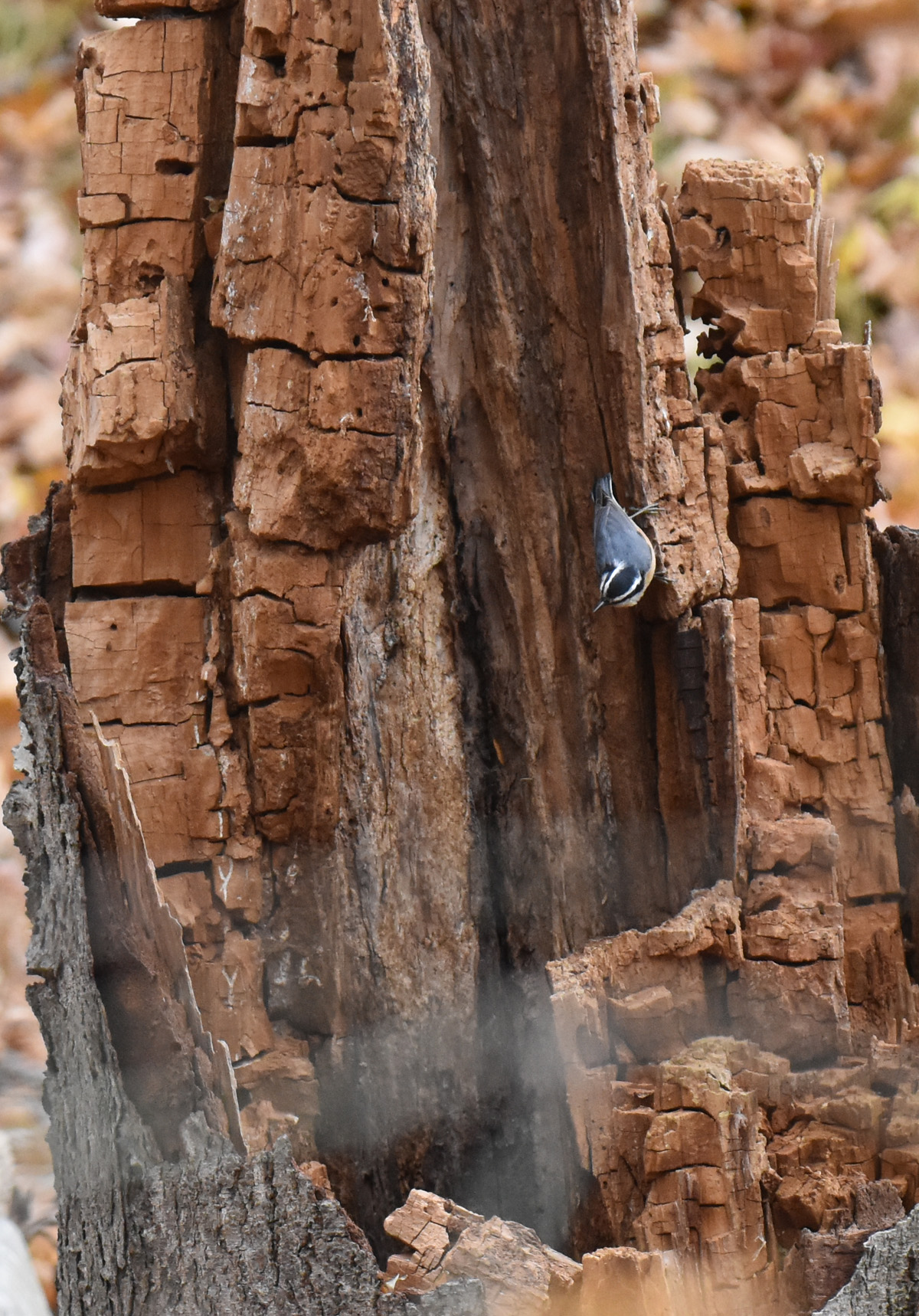
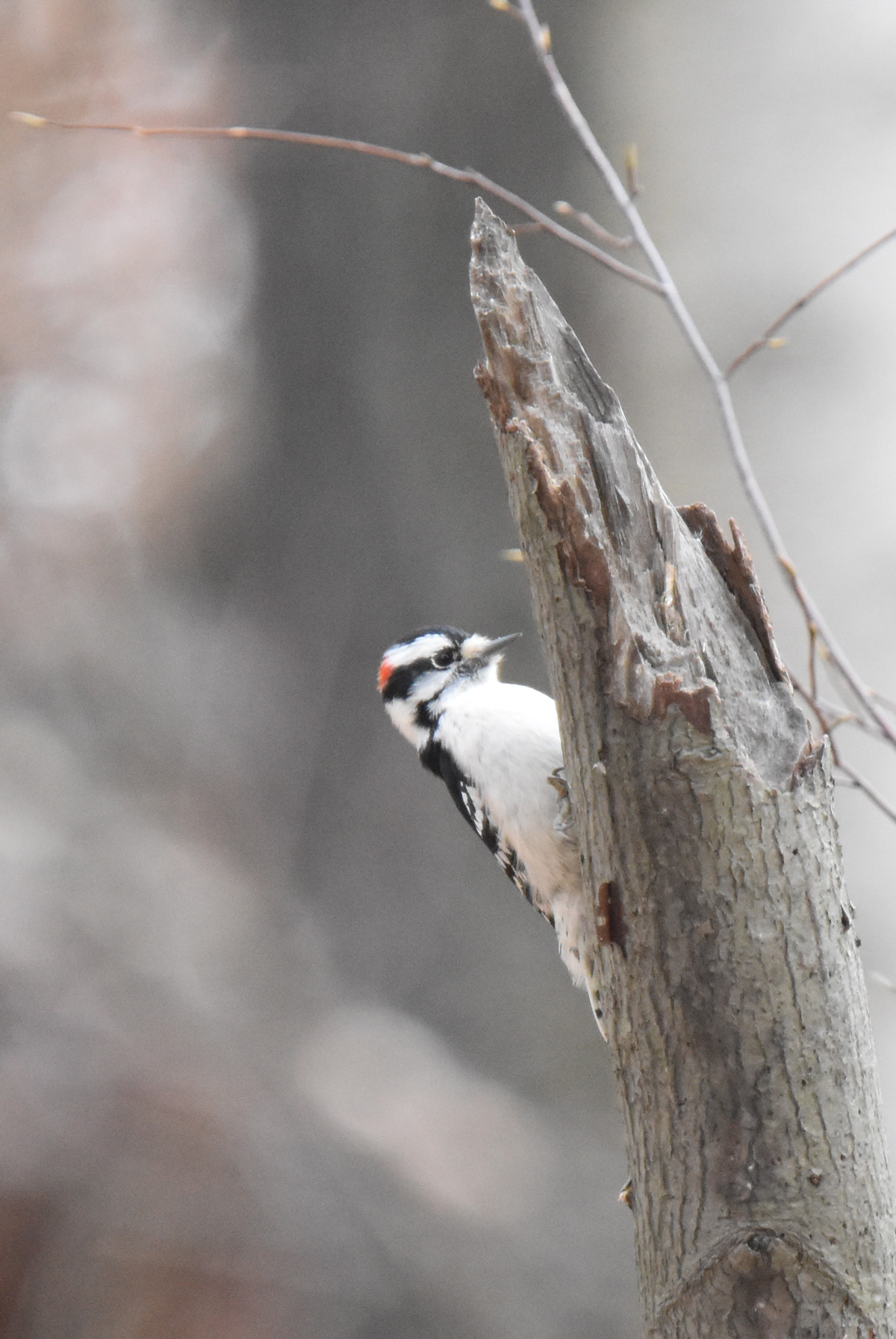
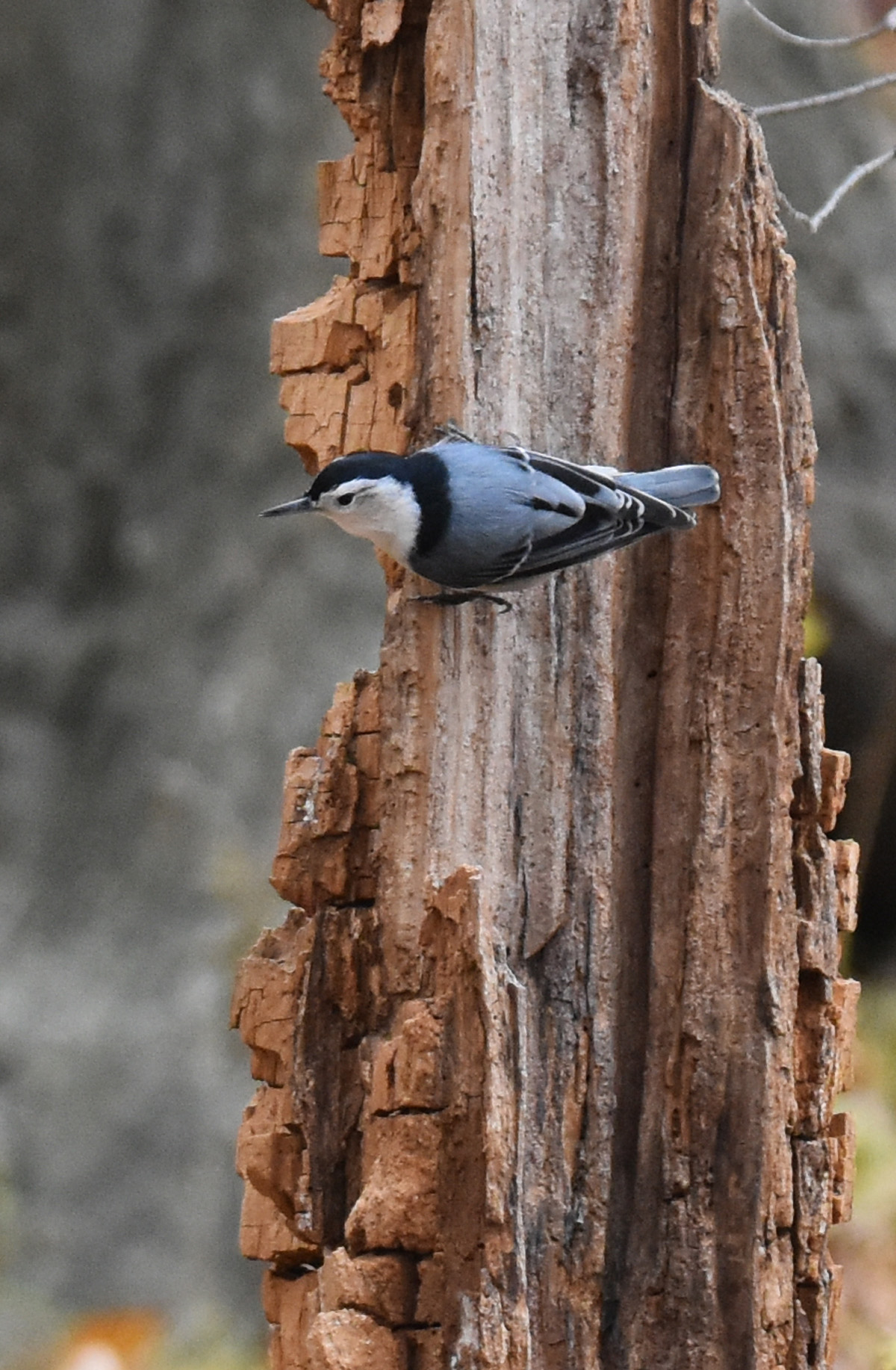

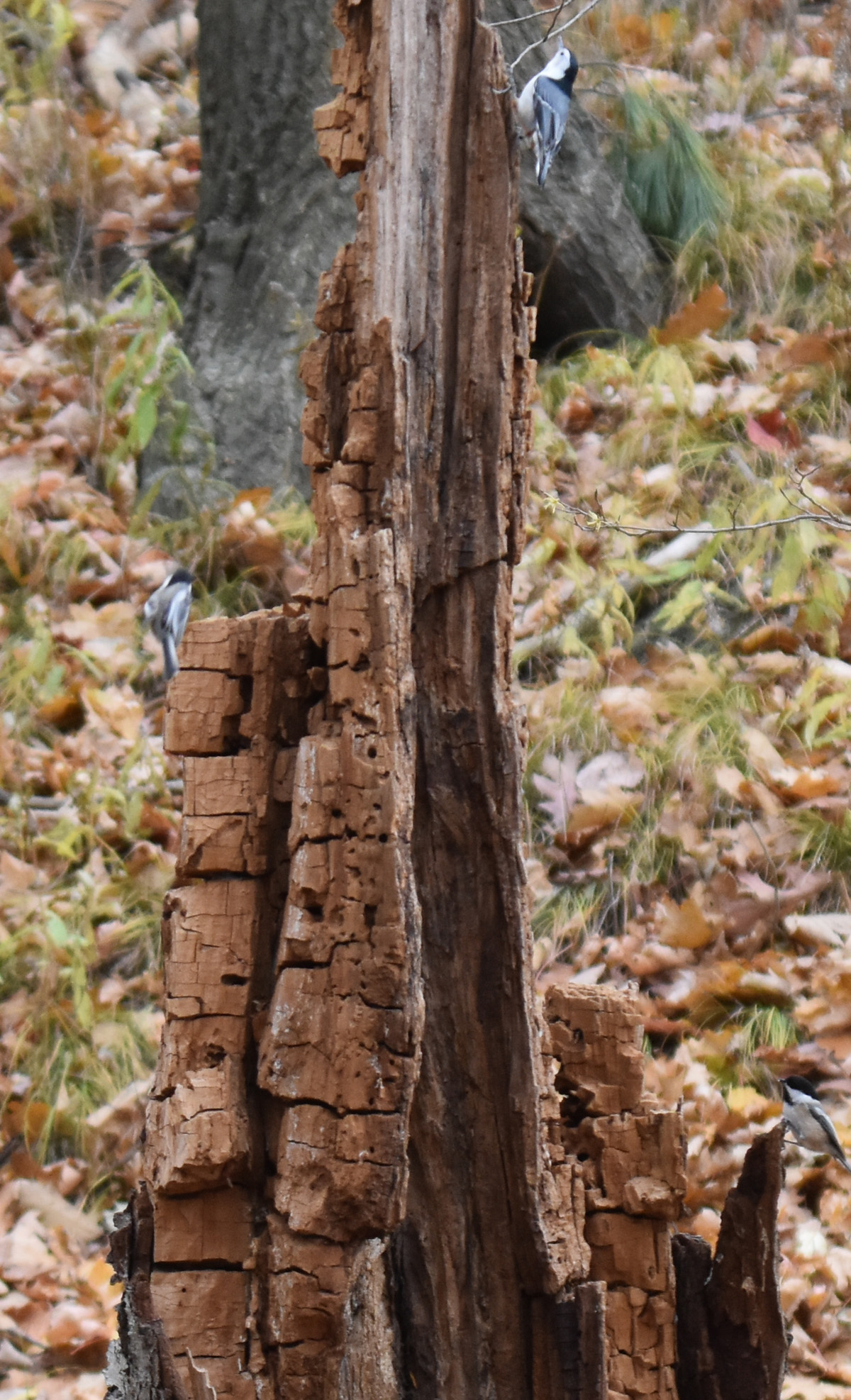
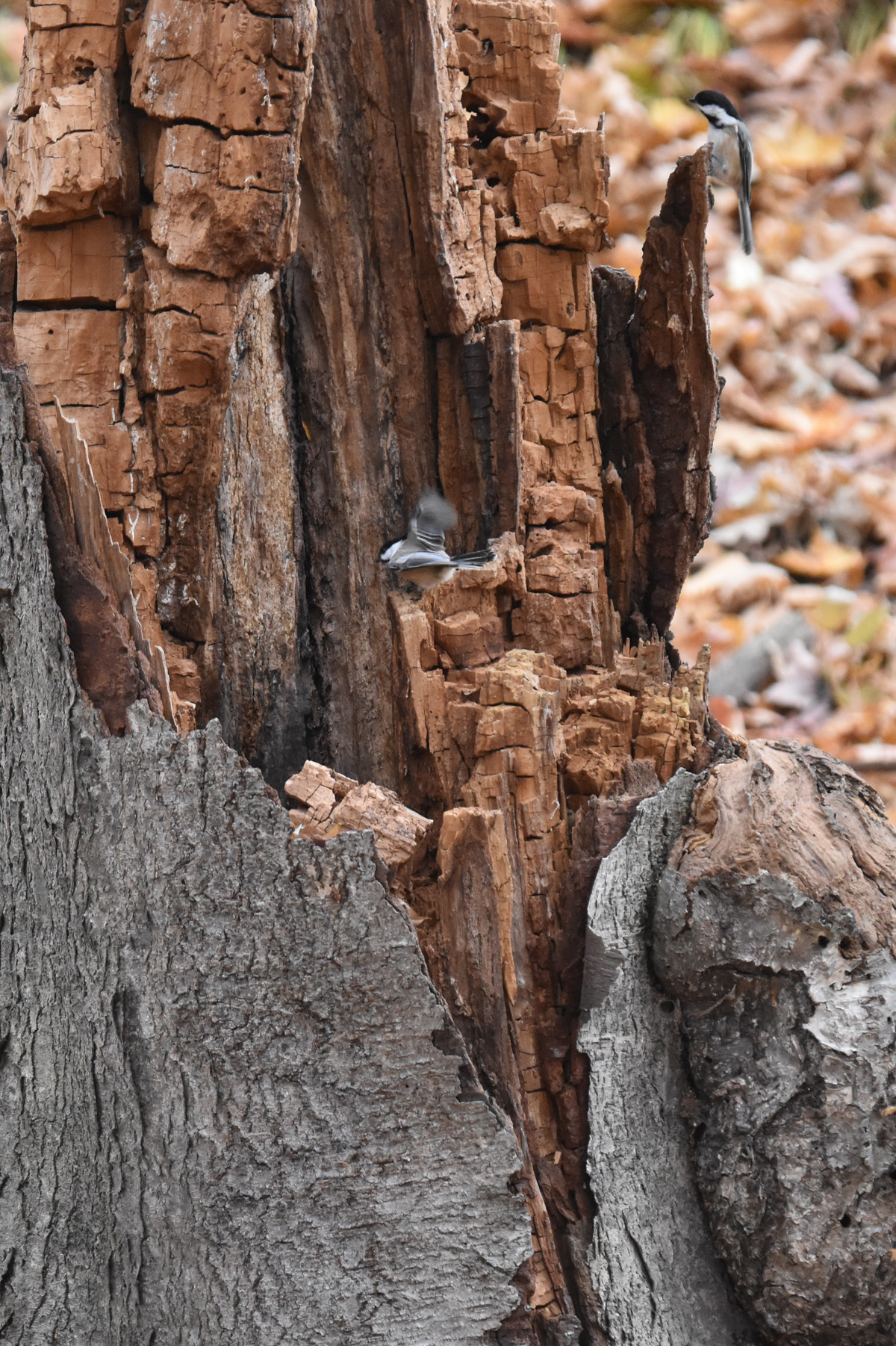
After a few minutes, the song birds gave up on the owl and went back to their daily activities.

There was still no sign of their foe.
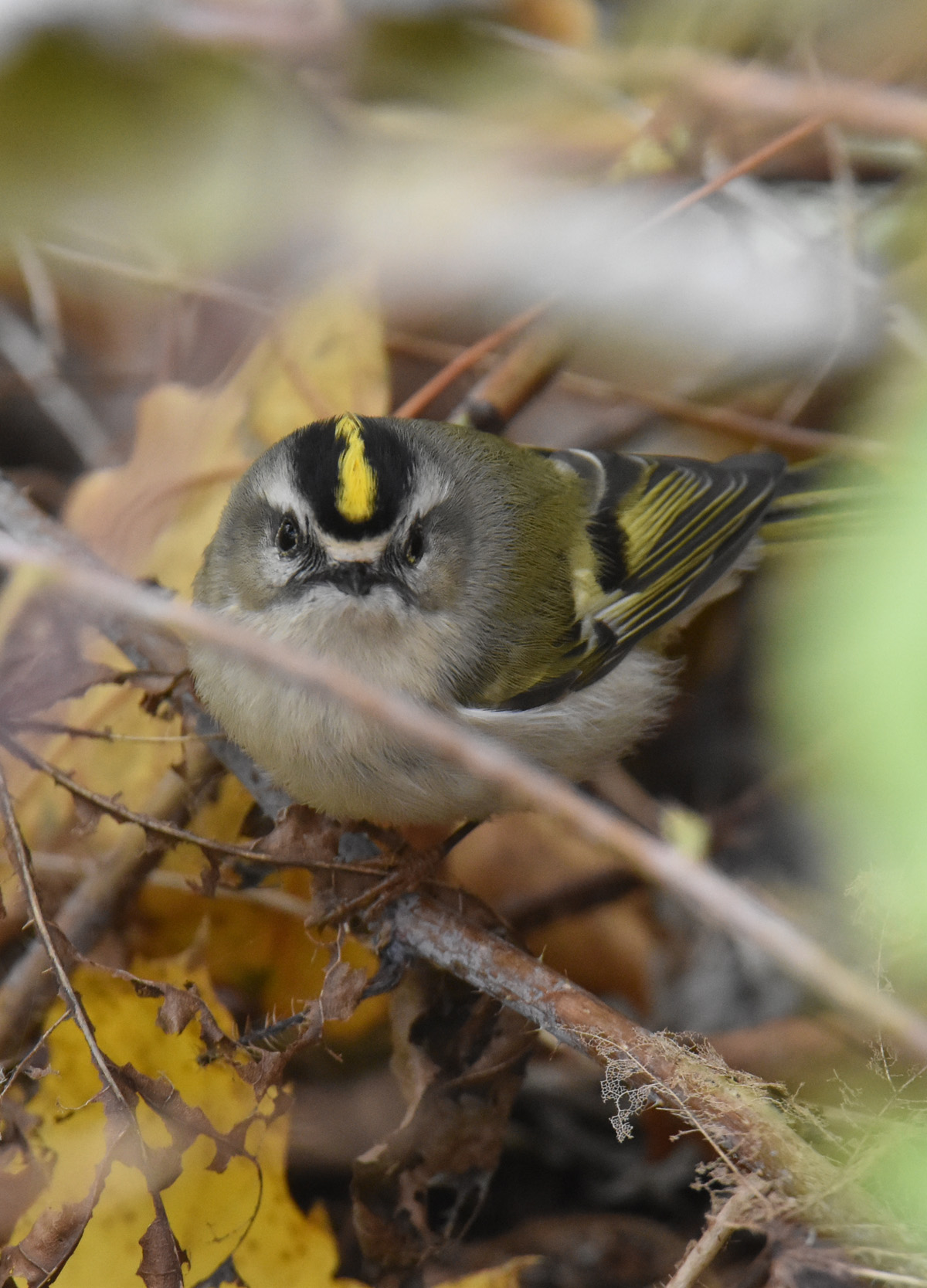
I stood beside the path, while my curiousity battled with my conscience that told me to stay on the path. Curiousity won, I regret to say. I took three steps into the crunchy autumn leaves—and a head popped up out of the stump.
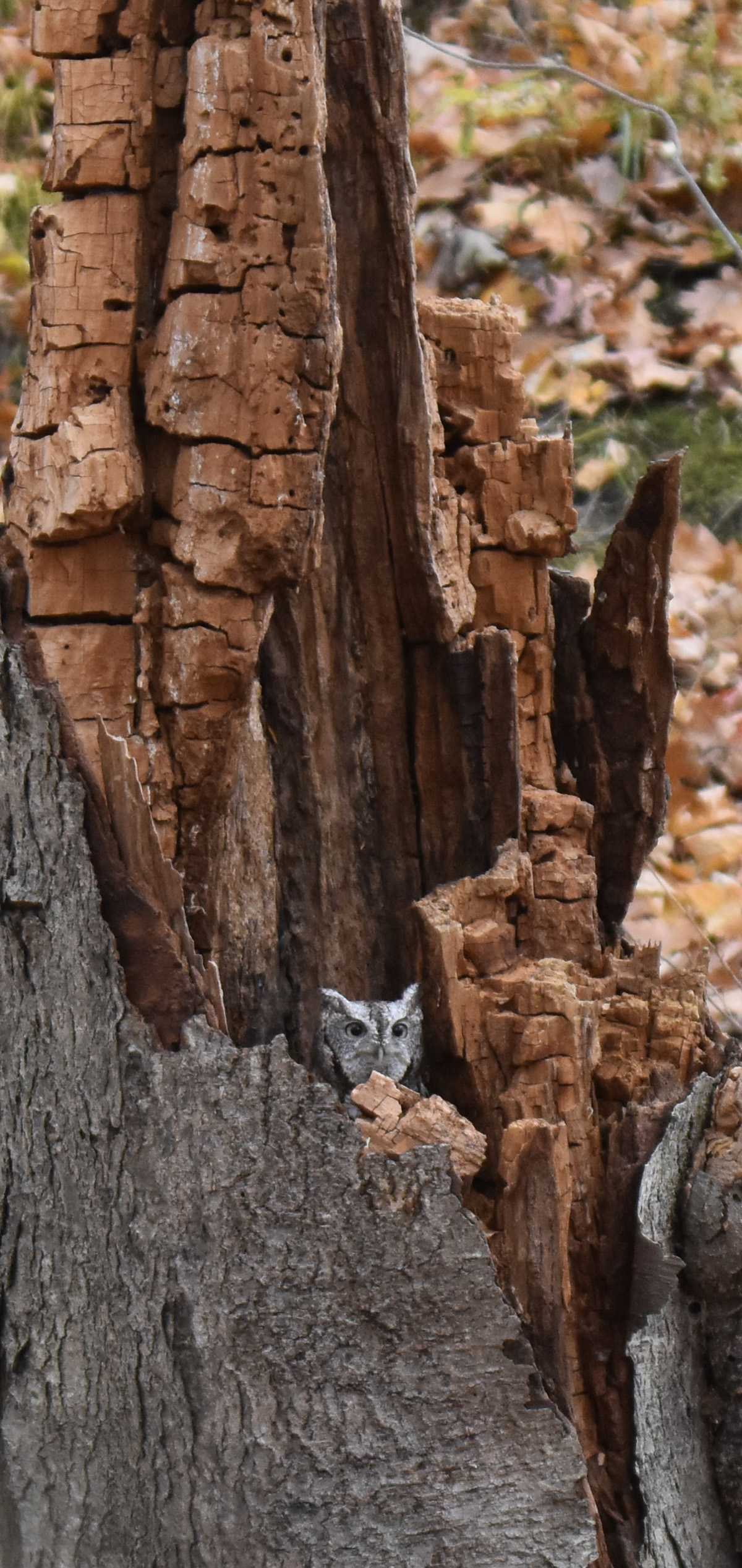
Immediately I retreated to the path where I stayed for ten minutes watching the Screech Owl. It didn’t immediately fly up and away, despite being in a rather vulnerable location quite close to the ground.
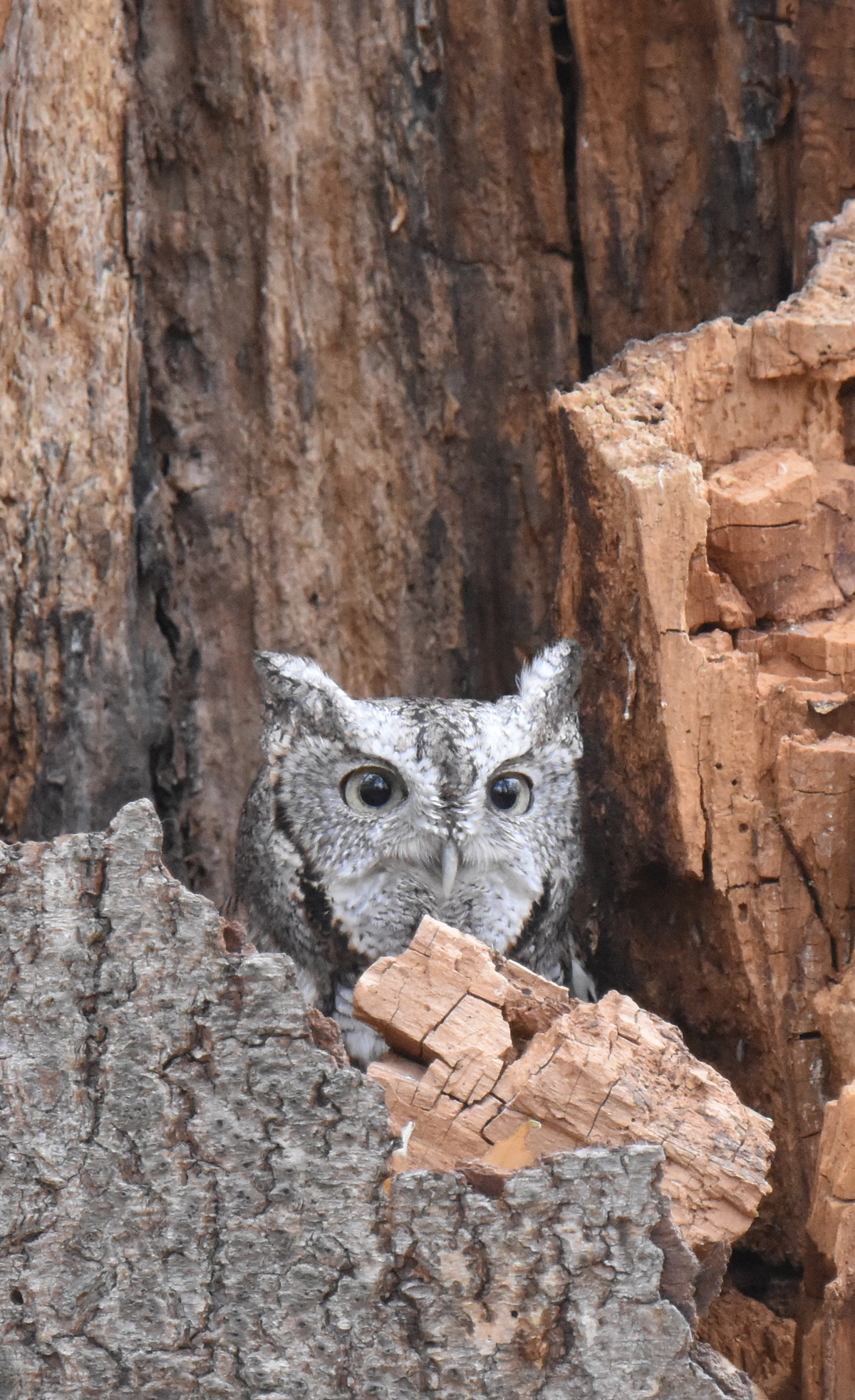
The Screech Owl did, however, not like dogs. If a group of people strolled past, it didn’t move. But if a similar group approached with a dog, it immediately sank from view back inside the hollow of the stump. After the dog had moved off down the trail, it would cautiously, slowly rise up again.

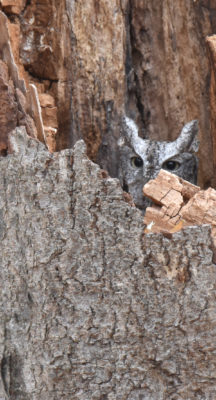
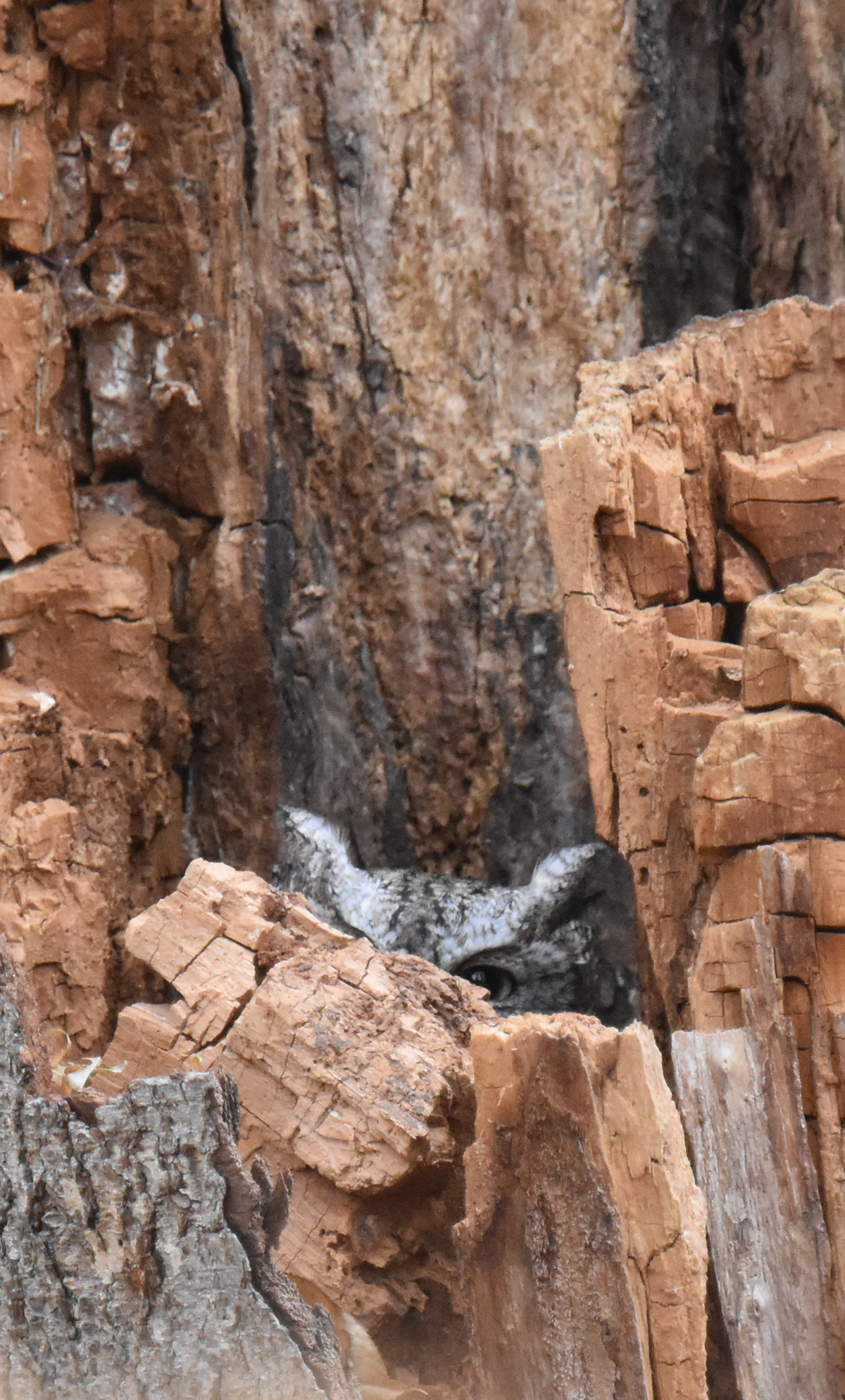
I watched this performance several times and found it quite amusing. It was as if the owl had an elevator which is used to lower and raise itself up depending on how close by a dog was!
Eventually, I left and continued to explore other trails.
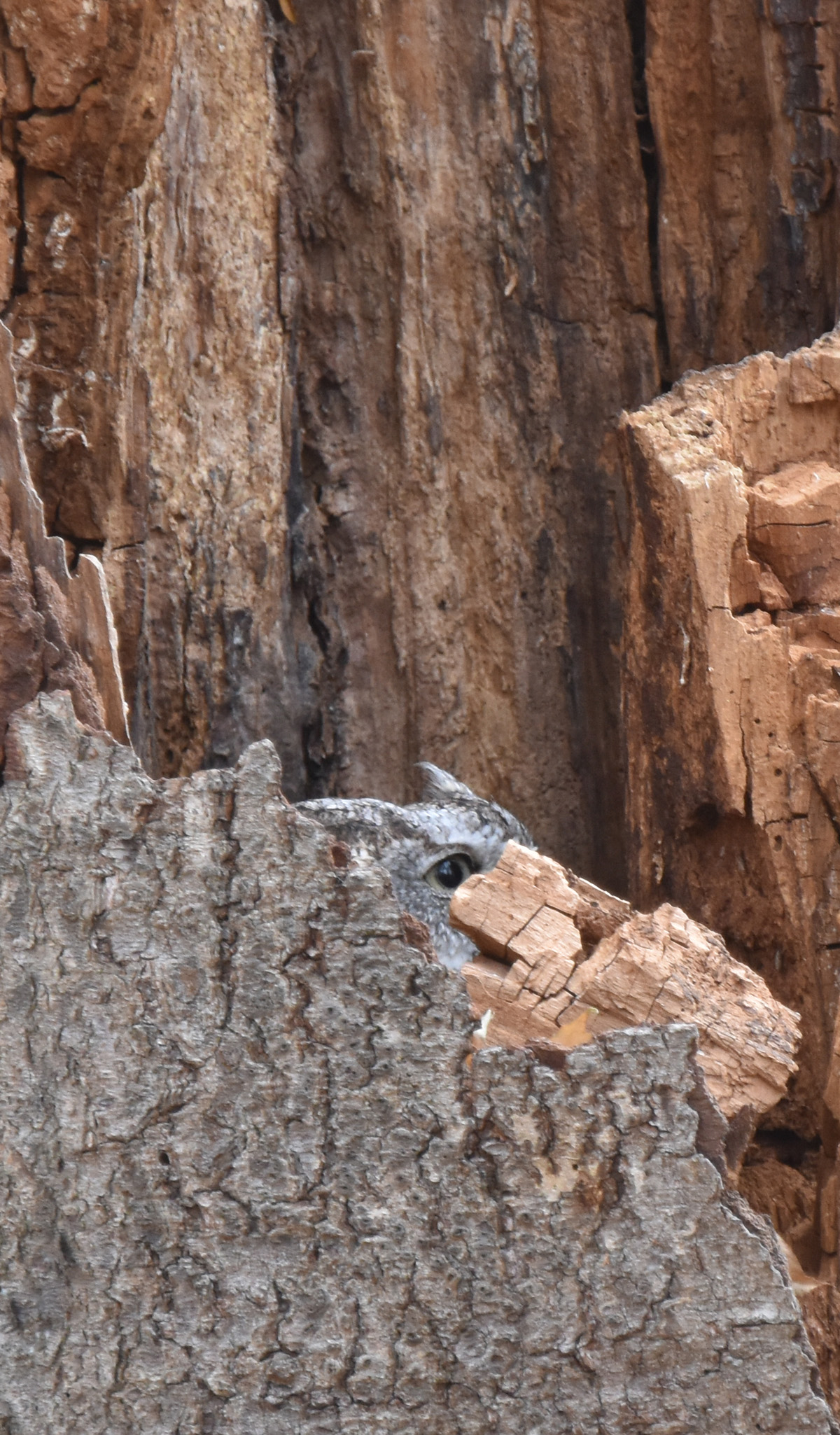
Why Do Perching Birds Chase Owls?
I pointed out the Screech Owl stump to a couple of people walking their dogs along the path. They asked why the birds were chasing it.
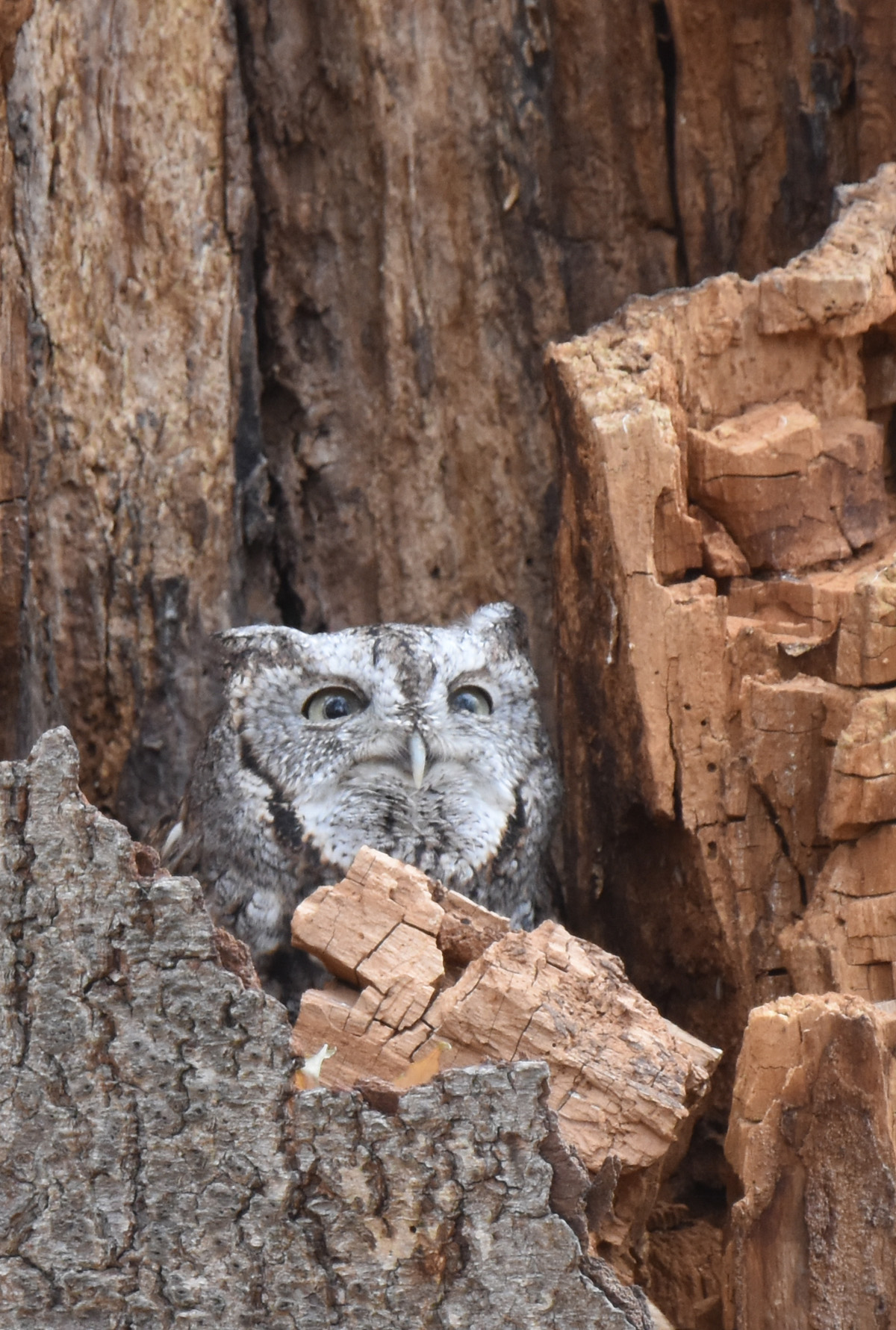
During the nesting season, many perching birds will attack threats to their eggs and nestlings. I’ve seen tiny Gnatcatchers go up after Red-tailed Hawks, and warblers chase Turkey Vultures.
In the fall, though, no one is nesting in my parks. This aggression isn’t triggered by unusually high levels of testosterone or by parents trying to defend their young.
One woman asked if they will actually attack the owl with their claws or beaks. I don’t think so at this time of year, based on what I’ve seen. They get close, but not that close. Instead, they seem interested in harassing it into leaving their territory
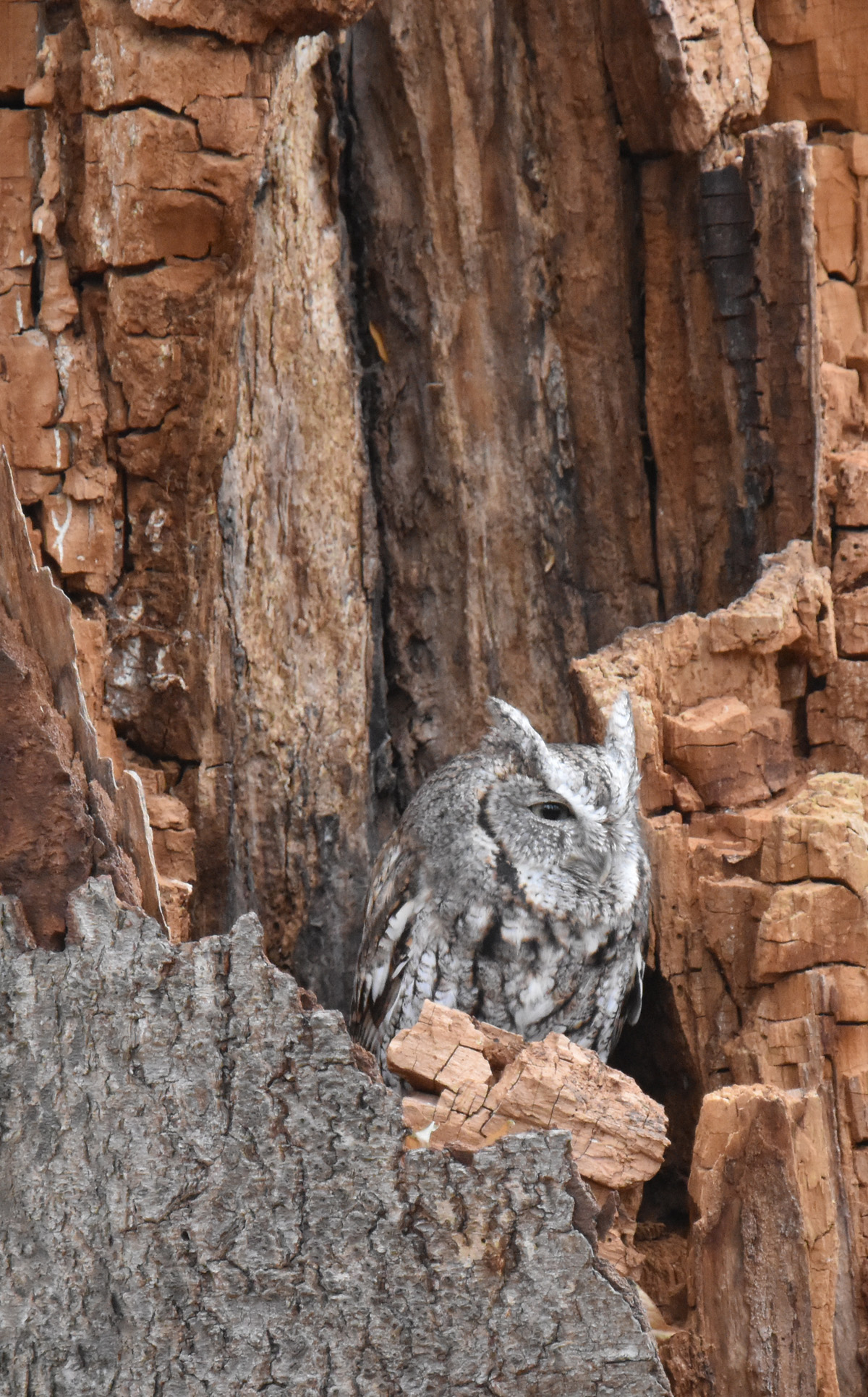
When I circled past almost 20 minutes later, the Screech Owl was still at the stump, though much higher up than previously. I suspect it was about to fly to a more secure hiding spot.
I’m sure that the owls don’t appreciate this kind of attention—but it’s great for me. I would never have seen this Screech Owl if the perching birds hadn’t flushed it and pointed it out to me.
Related Reading
Join In
Has a flock of Angry Birds led you to an Owl or Hawk? Please share your experience with a comment.
